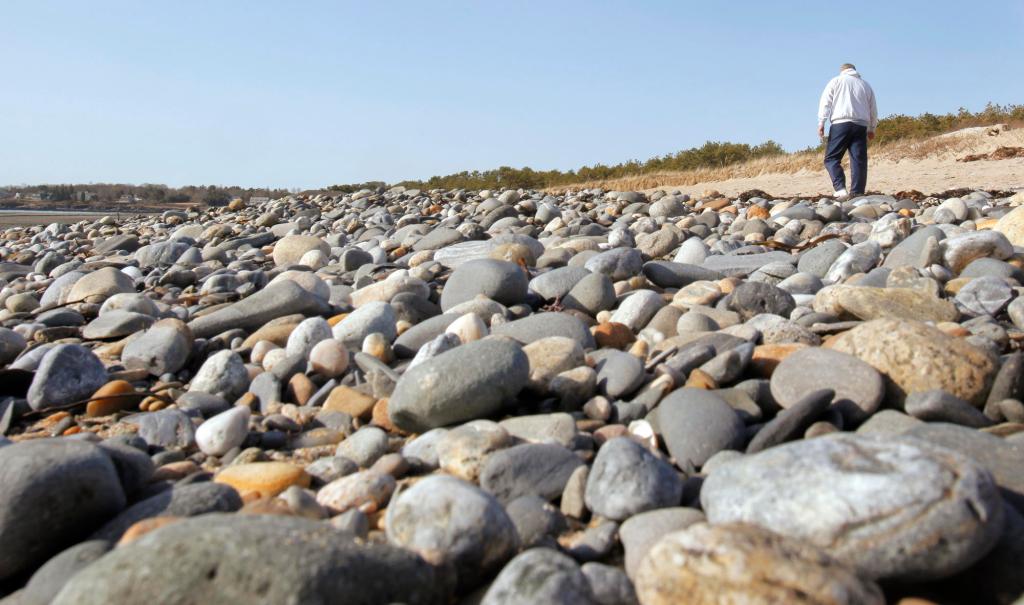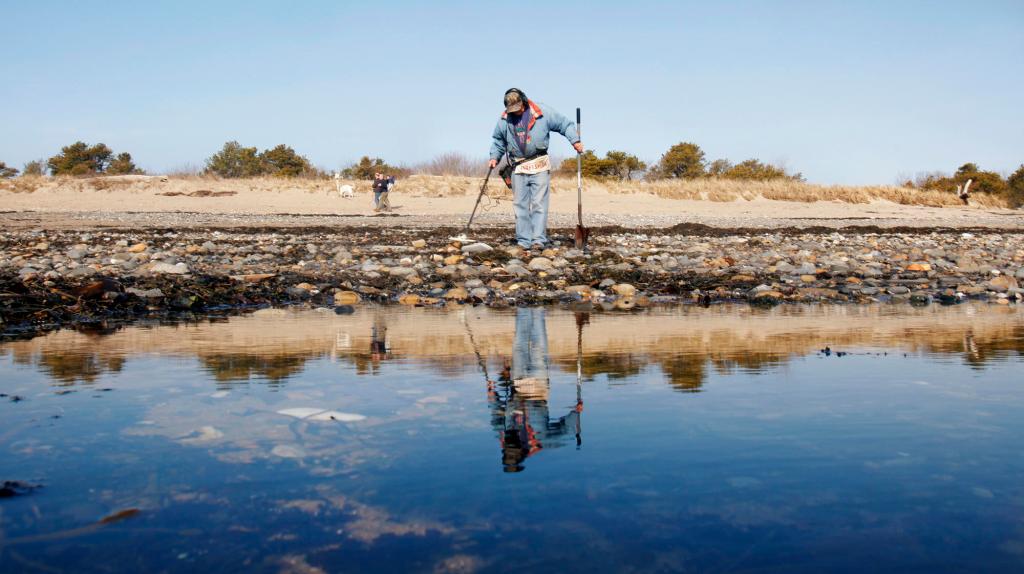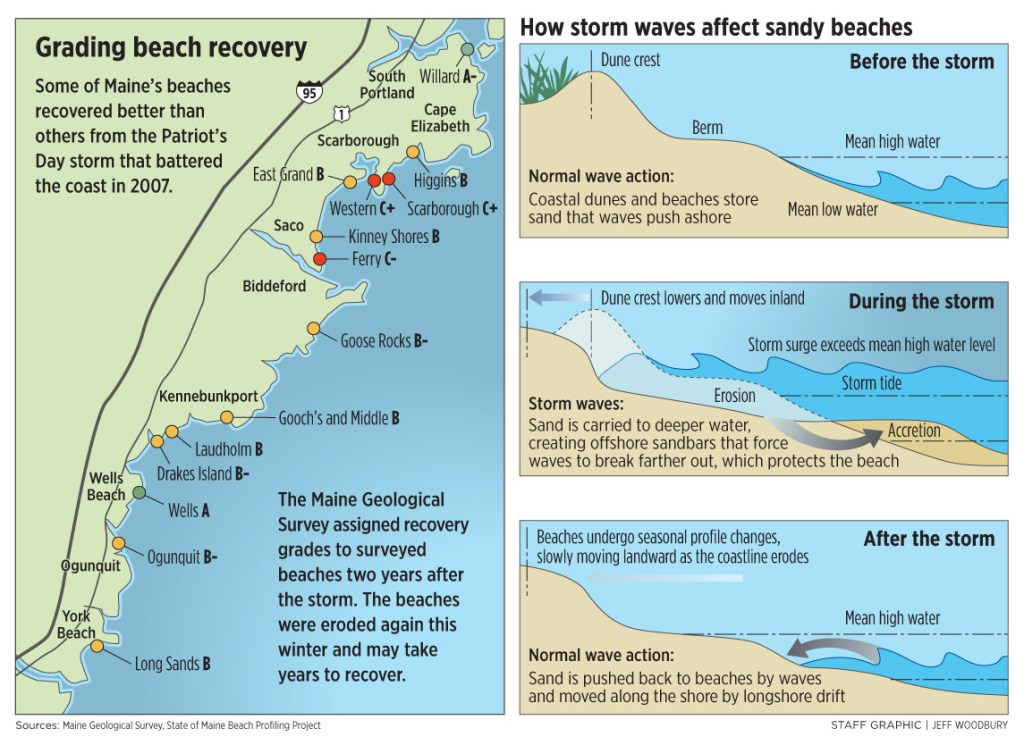SCARBOROUGH — Paul Morse showed up early Friday at Scarborough Beach State Park, armed with his metal detector to look for coins, jewelry and other metal items.
Instead of the usual expanse of sand, he found a cobblestone shoreline. Detecting buried treasure isn’t so easy on a surface of marble- and baseball-sized rocks, he said.
“It makes it hard digging and creates a lot of noise. I’ve never seen it like this,” said Morse, who lives in West Baldwin.
With a run of unseasonably mild weather, people are flocking to Maine’s beaches – and finding they’re not the beaches they left behind last summer. This wild winter has taken a toll, washing away sand with a series of storms and high tides starting late last month.
While east-facing beaches such as Camp Ellis in Saco got the worst of the damage, even south-facing beaches took a beating, said Peter Slovinsky of the Maine Geological Survey.
The erosion has been enough to cut a new channel for the Morse River at Popham Beach State Park in Phippsburg, tear apart sea walls at Higgins Beach in Scarborough and reveal the stumps of a 3,600-year-old petrified forest – last exposed in 1978 – on Jennes Beach in Rye, N.H.
While some of the sand is expected to return during the summer, the beaches could take years to recover. If the coastal storms don’t let up in the next few months, people may want to bring air mattresses to the beach this summer, to avoid the pebbles and stay dry when the tide rises.
“Any other big storms will halt or reverse the recovery process,” said Stephen Dickson, a state marine geologist.
Dickson said the amount of erosion this winter equals the damage from the Patriots Day storm of 2007 and the Halloween storm of 1991, also known as the Perfect Storm.
On average this winter, the state’s sandy beaches have lost 2 to 3 feet of elevation and the dunes have lost 5 to 10 feet of vegetation, Dickson said.
The Maine Geological Survey keeps track of a dozen beaches in southern Maine with help from teams of volunteers who go out once a month to measure the beaches at the same locations.
Steve Seabury, who has been part of a team measuring Higgins Beach for the past 11 years, said much of the sand has vanished this winter.
He said enough sand has washed away to expose a black ledge that’s never been seen, and boulders have been pulled from a section of the sea wall.
The volunteer teams helped to document how well the beaches recovered by last year from the 2007 Patriots Day storm. Some of the beaches recovered naturally, but others required human intervention.
Willard Beach in South Portland lost more than 40 feet of dunes in the 2007 storm but had gained them back two years later, largely because of an intensive dune grass and restoration effort, according to the Maine Geological Survey’s 2009 report on the state of Maine’s beaches.
The normal seasonal pattern is for storms to continue eroding beaches through the next two months, carrying the sand to offshore sandbars.
“In the spring, the beaches will look low and lean,” said Dickson.
Then, with milder weather, waves move the sand back toward the beach. Much of the sand should be back by July and August, and continue to build into September.
While the potential for stormy weather remains, geologists say it is too early to predict this summer’s beach conditions.
“The hope is there is going to be recovery,” said Slovinsky.
Staff Writer Beth Quimby can be contacted at 791-6363 or at:
bquimby@pressherald.com
Send questions/comments to the editors.






Success. Please wait for the page to reload. If the page does not reload within 5 seconds, please refresh the page.
Enter your email and password to access comments.
Hi, to comment on stories you must . This profile is in addition to your subscription and website login.
Already have a commenting profile? .
Invalid username/password.
Please check your email to confirm and complete your registration.
Only subscribers are eligible to post comments. Please subscribe or login first for digital access. Here’s why.
Use the form below to reset your password. When you've submitted your account email, we will send an email with a reset code.